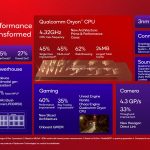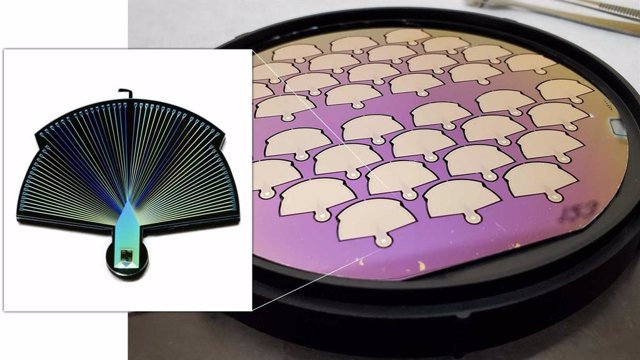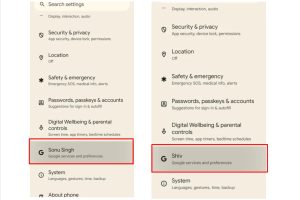March 3 () –
The way in which quantum computers located at great distances exchange huge amounts of quantum data it can be transformed with a new detector from JPL and Caltech.
Quantum computers promise to work millions of times faster than conventional ones. But to communicate over long distances, quantum computers will need a dedicated quantum communications network.
To help create that network, scientists at NASA’s Jet Propulsion Laboratory and Caltech have developed a device capable of counting huge numbers of single photons – quantum particles of light – with incredible precision.
The PEACOQ (Performance-Enhanced Array for Counting Optical Quanta) detector, Similar to measuring drops of water sprayed from a hose, it is able to measure the exact moment each photon hits, with a precision of 100 trillionths of a second, at a rate of 1.5 billion photons per second. No other detector has reached that speed.
“Transmitting quantum information over long distances has, until now, been very limited,” says Ioana Craiciu, a member of the PEACOQ project team, a JPL postdoctoral fellow, and lead author of a study describing these results. “A new detector technology such as PEACOQ, capable of measuring individual photons with a precision of a fraction of a nanosecondmakes it possible to send quantum information at higher speeds, further.”
Conventional computers transmit data through modems and telecommunications networks by making copies of the information as a series of 1s and 0s, also called bits. The bits are then transmitted through cables, fiber optics, and space using flashes of light or pulses of radio waves. When received, the bits are reassembled to recreate the data that was originally transmitted.
Quantum computers communicate differently. They encode information as quantum bits – or qubits – into fundamental particles, such as electrons and photons, which cannot be copied and retransmitted without being destroyed. For added complexity, the quantum information transmitted by optical fibers using coded photons degrades after a few tens of kilometres, which which greatly limits the size of any future network.
For quantum computers to communicate beyond these limitations, an optical quantum network dedicated to free space it could include space “nodes” aboard Earth-orbiting satellites. These nodes would relay data by generating entangled photon pairs that would be sent to two ground-based quantum computer terminals, hundreds or even thousands of kilometers apart.
Entangled pairs of photons are so closely connected that a measurement of one immediately affects the measurement results of the other, even when separated by a great distance. But for these entangled photons to be received on the ground by the terminal of a quantum computer, a very sensitive detector like PEACOQ is needed. to precisely measure the moment each photon is received and deliver the data it contains.
The detector is tiny. Measuring just 13 microns, it is comprised of 32 niobium nitride superconducting nanowires on a silicon chip with connectors that fan out like the detector’s plumage. Each nanowire is 10,000 times finer than a human hair.
The PEACOQ detector, funded by NASA’s Space Operations Mission Directorate’s Space Communications and Navigation (SCaN) program and built by JPL’s Microdevices Laboratory, must be kept at a cryogenic temperature of just 1 degree above Celsius. absolute zero, that is, minus 272 degrees Celsius. This keeps the nanowires in a superconducting state, necessary for them to can convert the absorbed photons into electrical impulses that provide the quantum data.
Although the detector must be sensitive enough to single photons, it is also designed to withstand the impact of many photons at once. When a photon hits a detector nanowire, the detector is momentarily unable to detect another photon – a period called “dead time” – but each superconducting nanowire is designed to have the shortest possible dead time. Besides, PEACOQ is equipped with 32 nanowires so that the others can fill in for lack of detection while one is “dead.”
“In the short term, PEACOQ will be used in laboratory experiments to demonstrate quantum communications at higher speeds or over longer distances,” says Craiciu. it’s a statement. “In the long term, it could answer the question of how we transmit quantum data around the world.”
Part of a larger NASA effort to make free-space optical communications possible between space and Earth, PEACOQ is based on the detector developed for NASA’s Deep Space Optical Communications (DSOC) technology demo. . DSOC will launch with NASA’s Psyche mission later this year to demonstrate, for the first time, how high-bandwidth optical communications between Earth and deep space might work in the future.
Although DSOC will not communicate quantum information, its ground terminal at Caltech’s Palomar Observatory in southern California requires the same extreme sensitivity to count the individual photons arriving by laser from the DSOC transceiver on its journey through deep space.
“It’s the same technology, but with a new category of detectors,” explains Matt Shaw, head of JPL’s superconducting detectors. “Whether that photon is encoded with quantum information or we want to detect individual photons from a laser source in deep space, we keep counting individual photons.”














